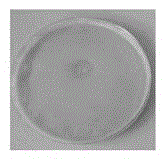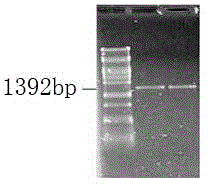Preparation and detection method of pseudomonas aeruginosa algC gene clonal strains
A Pseudomonas aeruginosa detection method technology, applied in the field of animal genetic engineering, can solve the problem of few research reports
- Summary
- Abstract
- Description
- Claims
- Application Information
AI Technical Summary
Problems solved by technology
Method used
Image
Examples
Embodiment Construction
[0030] Embodiments of the present invention: a preparation and detection method of Pseudomonas aeruginosa algC gene clone:
[0031] 1 Strains and culture methods
[0032]In this experiment, Pseudomonas aeruginosa was isolated from goats and wild animal bamboo rat disease materials. The medium for cultivating Pseudomonas aeruginosa was LB medium, PIA medium, GXI medium, SGI medium, and MSM medium. After the strain was cultured at 37 °C for about 24 h-72 h, 1 ml of the culture solution was taken and transferred to a container. In a preservation tube with 70 μL DMSO, the strains were stored at -70°C for future use. NTP, Taq, Pfx enzymes, and E.coli TOP10 were provided by Invitrogen. E. coli TOP10 was used to transform Escherichia coli containing the target gene plasmid. When cultivating the strains, add appropriate amount of antibiotics, such as ampicillin, 100 μg / ml; Amamicin, 10 μg / ml; tetracycline, 12.5 μg / ml; plasmid pGEM-TEasy provided by Promega.
[0033] 2 Preparation o...
PUM
 Login to View More
Login to View More Abstract
Description
Claims
Application Information
 Login to View More
Login to View More - R&D
- Intellectual Property
- Life Sciences
- Materials
- Tech Scout
- Unparalleled Data Quality
- Higher Quality Content
- 60% Fewer Hallucinations
Browse by: Latest US Patents, China's latest patents, Technical Efficacy Thesaurus, Application Domain, Technology Topic, Popular Technical Reports.
© 2025 PatSnap. All rights reserved.Legal|Privacy policy|Modern Slavery Act Transparency Statement|Sitemap|About US| Contact US: help@patsnap.com



